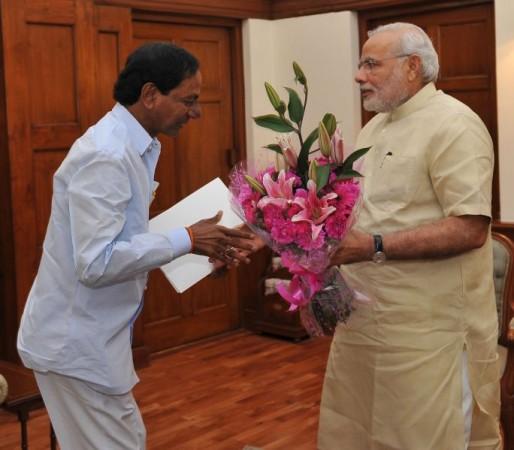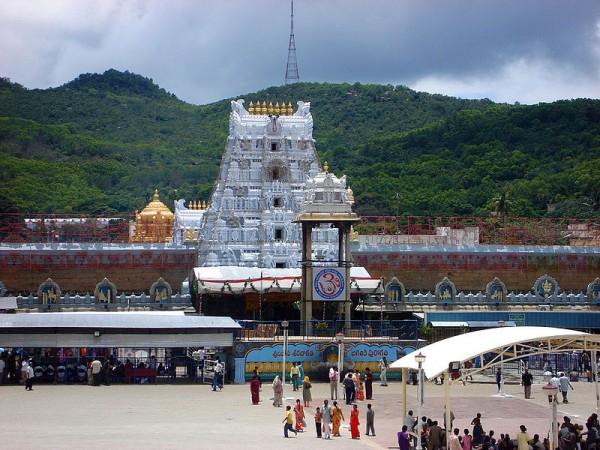
Amid strong criticism, Telangana Chief Minister K Chandrasekhara Rao on Wednesday (February 22) donated gold ornaments worth Rs 5.6 crore weighing around 19 kilograms at the famous Lord Venkateshwara Temple in Tirupati to keep his promise of doing so if a separate Telangana state was formed. The important point here is that the donations to fulfil that vow were made using the taxpayers' money.
In a show of generosity with the taxpayers' money, Rao handed over a golden garland studded with fossilised shells called "Shaligram Haram" and a multi-layered gold necklace called "Makhara Kantabharanam" to temple Executive Officer D Sambasiva Rao, the Press Trust of India quoted the temple sources as saying. Rao also offered gold at the shrine of Sri Padmavathi in Tiruchanur.
Even though donations by politicians, businessmen and the like is a regular affair at the temple in Tirupati, it is the first time a state government has made such a huge offering since Independence. Media reports suggest that the Telangana government has spent a lot of the taxpayers' money in temple donations in gold since 2014, when the state was formed, and that there is also a committee that oversees the making of these ornaments.
KCR had reportedly vowed to donate gold ornaments in an attempt to appease deities if a separate Telangana state was formed. He had vowed to donate a golden crown to the idol of Goddess Bhadrakali of Warangal, a golden moustache to Lord Veerabhadra Swamy's idol at Kuravi in Warangal, a nose stud to Goddess Kanaka Durga's idol in Vijayawada and another to Goddess Padmavathi's idol in Tiruchanur. Several of these donations have already been made to the respective temples under the pretext of fulfilling the vow.

It is not wrong to make donations to a temple as long as it is being done out of the minister's private funds. Using crores of taxpayers' money to donate to a religious institution when the state is still suffering the aftereffects of the severe drought of 2016 and has been going through a water and agriculture crisis is seen as misuse of public money. The money should have gone into resolving these problems rather than making donations to dieties to fulfil a personal promise.
It had been earlier said that Rao would make all these donations in his private capacity. But it turns out that all the money for these offerings came from Common Good Fund for the Endowments Department — a fund set up to renovate dilapidated temples. Clearly, it is doubtful that the world's richest temple would need renovation. Also, donating ornaments does not fulfil the purpose of renovation.
However, the sad part is that no one in our deeply religious society objects to or blinks an eye over the blatant misuse of authority and public money to gain popularity or appease dieties. The Tirumala Tirupati Devashtanam (TTD), which reportedly gathered a revenue of Rs 2,678 last year, does not even require the taxpayers' grant.
The TTD, which operates a demat account in the name of Lord Balaji, already has a budget of Rs 2,858 crore approved for 2017-18. It is expected that the temple will earn at least Rs 258 crore through special entry darshans and privilege darshans and another Rs 100 crore through auction of human hair following the 'mundan' ceremonies, according to the Indian Express. A revenue of Rs 807 crore as interest on investments and Rs 124 crore from accommodation at their lodges is also expected this year.
Taking all of this into consideration, the donation made by Rao seems like a political strategy or a PR stunt to appease the public by appeasing the deities they worship.














